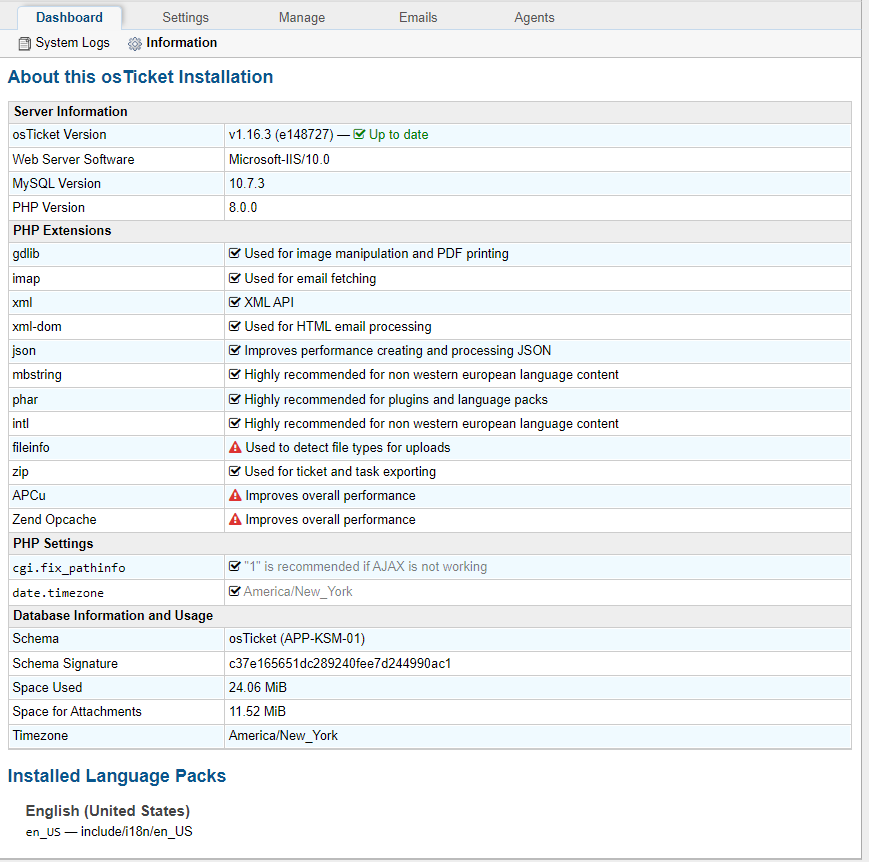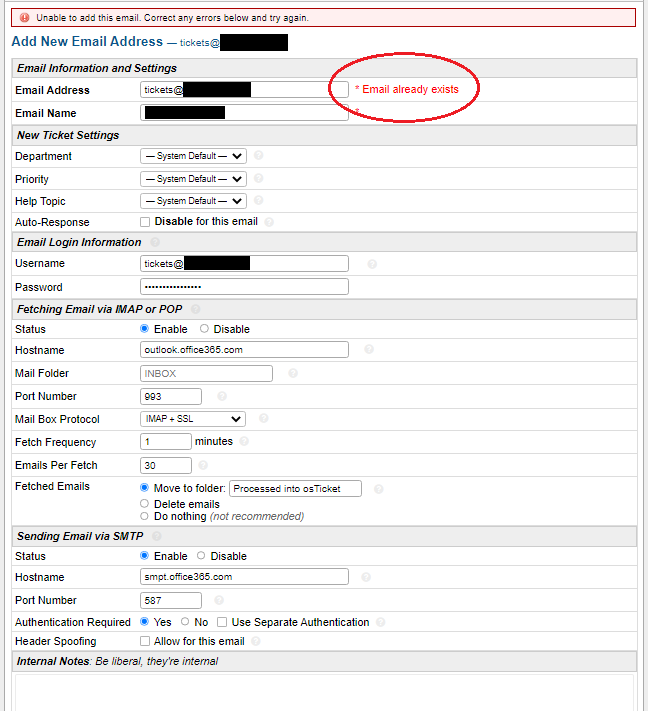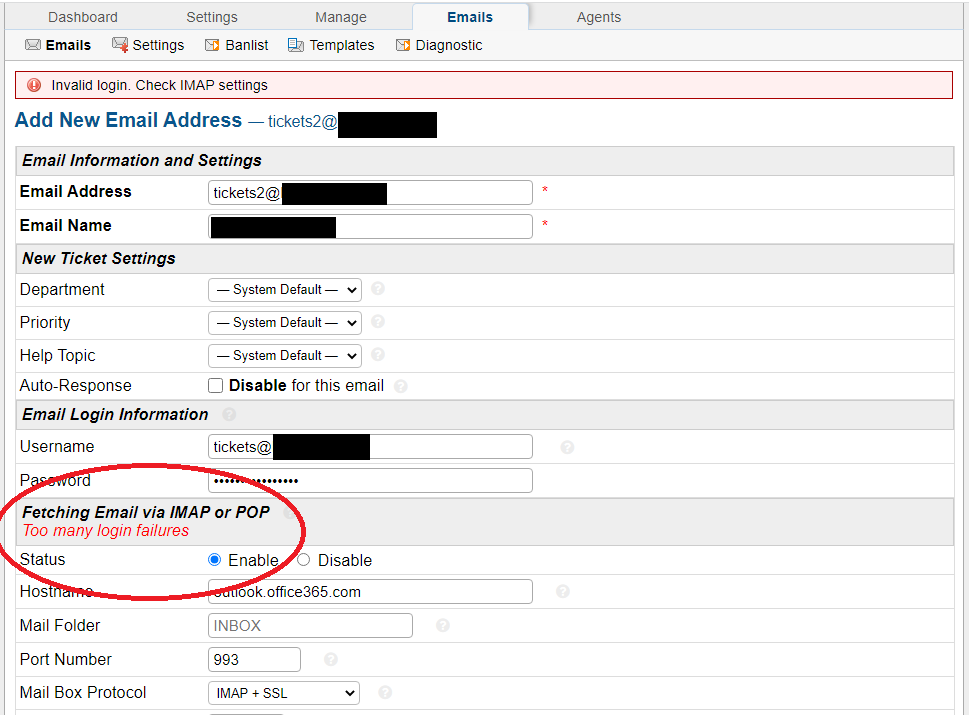Using osTicket 1.16.1, we suddenly started getting error alerts stating "Mail Fetch Failure Alert" and "Too many login failures." Despite receiving this alert, the system continued receiving e-mail tickets for a few more hours, but then stopped. We confirmed the account is not locked. It is an Microsoft 365 account, and we can successfully log into the mailbox using the same password as is configured in osTicket. Also, the Microsoft 365 logs shows all of osTicket's login attempts, and it shows that they are successful! We are also able to send outgoing e-mail successfully using this account from the osTicket Diagnostic tool.
As a troubleshooting step, I tried to re-enter the password for the e-mail into osTicket, but when I clicked "Save Changes," an error message appeared saying that the "Email already exists." This seems to be a bug, as we are not adding a new account, just editing the password of the existing one.
As another troubleshooting step, I upgraded osTicket to version 1.16.3, but that did not fix the issue.
In another troubleshooting step, I DELETED the e-mail account from osTicket entirely, so that I could re-add it. However, now when I try to re-add it, I still get an error saying "Email already exists." 🙁
Trying to play around with it, if I change the e-mail address to try to create a completely different one, but still leave the same Email login information, it still gives an error preventing me from adding the email. The error states "Too many login failures," which goes back to the original problem. Seems like quite the tangled web.
We've rebooted both the web server and the database server, multiple times throughout this process.
I would appreciate any help!


